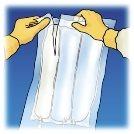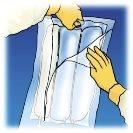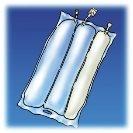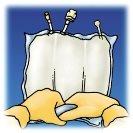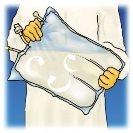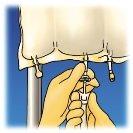

ОЛИМЕЛ N7E ЭМУЛЬСИЯ ДЛЯ ПЕРФУЗИИ

Спросите врача о рецепте на ОЛИМЕЛ N7E ЭМУЛЬСИЯ ДЛЯ ПЕРФУЗИИ

Инструкция по применению ОЛИМЕЛ N7E ЭМУЛЬСИЯ ДЛЯ ПЕРФУЗИИ
Введение
Проспект: информация для пользователя
Олимель Н7Е эмульсия для перфузии
Прочитайте весь проспект внимательно перед тем, как этот препарат будет введен вам, поскольку он содержит важную информацию для вас.
- Сохраните этот проспект, поскольку вам может потребоваться прочитать его снова.
- Если у вас есть какие-либо вопросы, проконсультируйтесь с вашим врачом или медсестрой.
- Если вы испытываете побочные эффекты, проконсультируйтесь с вашим врачом или медсестрой, даже если это побочные эффекты, которые не указаны в этом проспекте. См. раздел 4.
Содержание проспекта
- Что такое Олимель Н7Е и для чего он используется
- Что вам нужно знать перед тем, как Олимель Н7Е будет введен вам
- Как Олимель Н7Е будет введен вам
- Возможные побочные эффекты
- Хранение Олимель Н7Е
- Содержание упаковки и дополнительная информация
1. Что такое ОЛИМЕЛЬ Н7Е и для чего он используется
Олимель - это эмульсия для перфузии. Он представлен в мешке с 3 камерами
Одна камера содержит раствор глюкозы с кальцием, вторая содержит эмульсию липидов, а третья содержит раствор аминокислот с другими электролитами.
Олимель используется для питания взрослых и детей старше двух лет через трубку в вену, когда нормальное питание через рот невозможно
Олимель должен использоваться только под медицинским наблюдением.
2. Что вам нужно знать перед тем, как Олимель Н7Е будет введен вам
ОлимельН7Ене должен быть введен:
- Прематурным новорожденным, младенцам и детям младше двух лет
- Если вы гиперчувствительны (аллергичны) к белкам яйца, сои, арахиса, кукурузы/кукурузных продуктов (см. также раздел «Предостережения и меры предосторожности» ниже) или любому другому компоненту этого препарата (перечисленному в разделе 6).
- Если ваш организм имеет проблемы с использованием определенных аминокислот.
- Если у вас особенно высокий уровень жиров в крови
- Если у вас гипергликемия (слишком много сахара в крови)
- Если у вас аномально высокий уровень какого-либо электролита (натрия, калия, магния, кальция и/или фосфора) в крови.
Во всех случаях ваш врач решит, должен ли этот препарат быть введен вам, исходя из таких факторов, как ваш возраст, вес и клиническое состояние, а также результатов всех проведенных исследований.
Предостережения и меры предосторожности
Проконсультируйтесь с вашим врачом или медсестрой перед тем, как Олимель будет введен вам.
Слишком быстрое введение растворов полной парентеральной питания (ПП) может вызвать повреждения или смерть.
Перфузия должна быть остановлена немедленно, если развивается любой аномальный знак или симптомы аллергической реакции (такие как потоотделение, лихорадка, озноб, головная боль, кожная сыпь или затруднение дыхания). Этот препарат содержит масло сои и фосфолипиды яйца. Белки сои и яйца могут вызывать реакции гиперчувствительности. Были зарегистрированы перекрестные аллергические реакции между белками семян сои и арахиса.
Олимель содержит глюкозу, полученную из кукурузы, что может вызвать реакции гиперчувствительности, если у вас аллергия на кукурузу или кукурузные продукты (см. раздел «Олимель Н7Е не должен быть введен» выше).
Затруднение дыхания также может быть сигналом того, что в легких образовались мелкие частицы, блокирующие кровеносные сосуды (пульмональные васкулярные осадки). Если вы испытываете любые затруднения дыхания, сообщите вашему врачу или медсестре. Они решат, какие меры предпринять.
Антибиотик цефтриаксон не должен смешиваться или вводиться одновременно с растворами, содержащими кальций (включая Олимель), вводимыми капельно в вену.
Эти препараты не должны вводиться вместе, даже через разные линии или места перфузии.
Однако Олимель и цефтриаксон могут вводиться последовательно один за другим, если используются линии перфузии в разных точках или если линии перфузии заменяются или тщательно промываются физиологическим раствором между перфузиями, чтобы избежать образования осадков (образования частиц цефтриаксона и кальциевой соли).
Определенные препараты и заболевания могут увеличить риск развития инфекций или сепсиса (бактерий в крови). Существует риск инфекции или сепсиса, особенно когда устанавливается трубка (центральный венозный катетер) в вену. Врач будет внимательно следить за вами в поисках признаков инфекции.
Пациенты, которым требуется парентеральное питание (введение питательных веществ через трубку, введенную в вену), могут быть более склонны к инфекциям из-за своего медицинского состояния. Использование «асептических методов» (без микробов) при установке и обслуживании катетера и при подготовке питательной формулы (ПП) может снизить риск инфекции.
Если вы сильно недоедаете и нуждаетесь в получении питания через вену, ваш врач начнет лечение постепенно. Кроме того, вас будут контролировать, чтобы избежать внезапных изменений в уровнях жидкости, витаминов, электролитов и минералов.
До начала перфузии должны быть устранены метаболические расстройства и нарушения водно-солевого баланса в вашем организме. Врач будет следить за вашим состоянием во время введения этого препарата и может изменить дозу или добавить другие питательные вещества, такие как витамины, электролиты и олигоэлементы, если сочтет это необходимым.
Были зарегистрированы случаи нарушений функции печени, включая проблемы с выведением желчи (холестаз), накопление жира (стеатоз печени), фиброз, который может привести к недостаточности печени, а также холецистит и холелитиаз у пациентов, получающих парентеральное питание. Предполагается, что причина этих нарушений заключается в множественных факторах и может различаться у пациентов. Если вы испытываете симптомы, такие как тошнота, рвота, боль в животе, желтушность кожи или глаз, проконсультируйтесь с вашим врачом, чтобы выявить возможные причины и факторы, способствующие развитию этих состояний, а также возможные терапевтические и профилактические меры.
Ваш врач должен знать, если у вас:
- тяжелые проблемы с почками. Вы также должны сообщить врачу, если вы получаете диализ (искусственная почка) или если у вас есть другой вид лечения для очистки крови
- тяжелые проблемы с печенью
- проблемы со свертываемостью крови
- нарушения функции надпочечников (надпочечная недостаточность). Надпочечники имеют треугольную форму и расположены над почками
- нарушения функции сердца
- легочные заболевания
- накопление воды в организме (гипергидратация)
- недостаточное количество воды в организме (дегидратация)
- избыток сахара в крови (сахарный диабет) без лечения
- инфаркт миокарда или шок из-за внезапной сердечной недостаточности
- тяжелая метаболическая ацидоз (кровь слишком кислая)
- общая инфекция (сепсис)
- кома
Для проверки эффективности и безопасности введения ваш врач будет проводить лабораторные и клинические исследования во время введения этого препарата. Если этот препарат вводится в течение нескольких недель, ваша кровь будет регулярно анализироваться.
Снижение способности организма удалять жиры, содержащиеся в этом препарате, может привести к «синдрому перегрузки жиров» (см. раздел 4 «Возможные побочные эффекты»).
Если во время перфузии вы заметите боль, жжение или отек в месте перфузии или утечку перфузии, сообщите вашему врачу или медсестре. Перфузия будет немедленно остановлена и возобновлена в другой вене.
Если ваш уровень сахара в крови слишком высок, врач должен отрегулировать скорость введения Олимеля или предоставить лекарство для контроля уровня сахара в крови (инсулин).
Олимель может быть введен только через трубку (катетер), подключенную к большой вене в вашей груди (центральная вена).
Дети и подростки
Если ваш ребенок моложе 18 лет, будет уделено особое внимание введению правильной дозы. Также должны быть приняты дополнительные меры предосторожности из-за повышенной чувствительности детей к риску инфекции. Добавление витаминов и олигоэлементов всегда необходимо. Должны использоваться педиатрические формулы.
ИспользованиеОлимеляс другими препаратами
Сообщите вашему врачу, если вы принимаете или использовали, недавно принимали или могли бы принять любой другой препарат.
Одновременное введение других препаратов обычно не является противопоказанием. Если вы принимаете другие препараты, назначенные по рецепту или без него, вы должны проконсультироваться с вашим врачом заранее, чтобы он мог проверить их совместимость.
Сообщите вашему врачу, если вы принимаете или получаете любой из следующих препаратов:
- инсулин
- гепарин
Олимель не должен вводиться одновременно с кровью через одну и ту же линию перфузии.
Олимель содержит кальций. Он не должен вводиться вместе или через одну и ту же линию перфузии с антибиотиком цефтриаксоном, поскольку могут образовываться частицы. Если используется одно и то же устройство для введения этих препаратов последовательно, оно должно быть тщательно промыто
Из-за риска осаждения Олимель не должен вводиться через одну и ту же линию перфузии или смешиваться с антибиотиком ампициллином или противоэпилептическим препаратом фосфенитоином.
Масла оливы и сои, присутствующие в Олимеле, содержат витамин К. Это обычно не влияет на препараты, разжижающие кровь (антикоагулянты), такие как кумарин. Однако, если вы принимаете антикоагулянты, вы должны сообщить об этом вашему врачу.
Липиды, содержащиеся в этой эмульсии, могут влиять на результаты определенных лабораторных исследований, если образец крови берется до того, как они будут удалены из вашего кровотока (обычно через 5-6 часов после прекращения введения липидов).
Олимель содержит калий. Следует быть осторожным у пациентов, принимающих диуретики, ингибиторы АПФ, антагонисты рецептора II ангитензина (препараты против гипертонии) или иммунодепрессанты. Эти классы препаратов могут увеличить уровень калия в крови.
Беременность и лактация
Если вы беременны или кормите грудью, считаете, что могли бы быть беременной или планируете стать беременной, проконсультируйтесь с вашим врачом перед тем, как этот препарат будет введен вам.
Нет достаточного опыта использования Олимеля у беременных или кормящих женщин. Олимель может использоваться во время беременности и лактации, если это необходимо. Олимель должен вводиться беременным или кормящим женщинам только после тщательного рассмотрения.
Вождение и использование машин
Не применимо.
3. Как Олимель Н7Е будет введен вам
Доза
Олимель должен вводиться только взрослым и детям старше двух лет.
Это эмульсия для перфузии, то есть для введения через трубку (катетер) в большую вену в вашей груди.
Олимель должен быть при комнатной температуре перед использованием.
Олимель предназначен для одноразового использования.
Доза – Взрослые
Ваш врач определит скорость перфузии на основе ваших потребностей и клинического состояния.
Введение может продолжаться столько времени, сколько необходимо, в зависимости от вашего клинического состояния.
Доза – Дети старше двух лет и подростки
Врач решит, какую дозу и в течение какого времени препарат будет введен, на основе возраста, веса, роста, клинического состояния и способности организма расщеплять и использовать ингредиенты ОЛИМЕЛЯ.
Если вам было введено больше Олимеля Н7Е, чем должно быть
Если доза, введенная слишком высока или перфузия слишком быстрая, содержание аминокислот может сделать вашу кровь слишком кислой, и могут появиться признаки гиперволемии (увеличение объема циркулирующей крови). Уровни глюкозы в вашей крови и моче могут увеличиться, может развиться гиперосмолярный синдром (чрезмерная вязкость крови) и содержание липидов может увеличить уровень триглицеридов в вашей крови. Введение слишком быстрой или слишком большого объема Олимеля может вызвать у вас тошноту, рвоту, озноб, головную боль, жар, чрезмерное потоотделение (гипергидроз) и электролитные нарушения. В этом случае перфузия должна быть немедленно остановлена.
В некоторых тяжелых случаях ваш врач может потребовать временного диализа почек, чтобы помочь вашим почкам удалить избыток препарата.
Чтобы избежать таких случаев, ваш врач будет регулярно следить за вашим состоянием и анализировать параметры вашей крови.
Если у вас есть какие-либо другие вопросы о использовании этого продукта, проконсультируйтесь с вашим врачом.
В случае передозировки или случайного приема проконсультируйтесь с Токсикологической информационной службой. Телефон 915.620.420
4. Возможные побочные эффекты
Как и все препараты, этот препарат может вызывать побочные эффекты, хотя не все люди испытывают их. Если вы заметите, что не чувствуете себя как раньше, сообщите об этом вашему врачу или медсестре немедленно.
Исследования, которые ваш врач будет проводить во время введения этого препарата, должны минимизировать риск побочных эффектов.
Если развивается любой аномальный знак или симптомы аллергической реакции, такие как потоотделение, лихорадка, озноб, головная боль, кожная сыпь или затруднение дыхания, перфузия должна быть немедленно остановлена.
Следующие побочные эффекты были зарегистрированы для Олимеля:
Частота – часто: может повлиять на до 1 из 10 человек
- Ускоренный сердечный ритм (тахикардия).
- Снижение аппетита.
- Увеличение уровня жиров в крови (гипертриглицеридемия).
- Боль в животе.
- Диарея.
- Тошнота.
- Повышенное артериальное давление (гипертония).
Частота - Неизвестна: не может быть оценена из доступных данных
- Реакции гиперчувствительности, включая потоотделение, лихорадку, озноб, головную боль, кожную сыпь (эритематозную, папулезную, пустулезную, макулярную, генерализованную), зуд, приливы, затруднение дыхания
- Утечки перфузии в окружающие ткани (экстравазация) могут вызвать боль в месте перфузии, раздражение, отек/отек, покраснение (эритема)/жар, некроз кожи или пузыри/везикулы, воспаление, утолщение или сужение кожи.
- Рвота.
Следующие побочные эффекты были зарегистрированы для других подобных препаратов для парентерального питания:
Частота - Очень редко: могут повлиять на до 1 из 10 000 человек
- Снижение способности удалять липиды (синдром перегрузки жиров) в сочетании с внезапным ухудшением состояния пациента. Следующие симптомы синдрома перегрузки жиров обычно обратимы, когда перфузия липидной эмульсии остановлена:
- Лихорадка.
- Снижение количества красных кровяных клеток, что может привести к бледности кожи и вызвать слабость или затруднение дыхания (анемия).
- Низкий уровень лейкоцитов, что может увеличить риск инфекции (лейкопения).
- Низкий уровень тромбоцитов, что может увеличить риск синяков и/или кровотечения (тромбоцитопения).
- Нарушения свертываемости крови.
- Увеличение уровня жиров в крови (гиперлипидемия).
- Жировая инфильтрация печени (гепатомегалия).
- Ухудшение функции печени.
- Проявления со стороны центральной нервной системы (например, кома).
Частота - Неизвестна: не может быть оценена из доступных данных
- Аллергические реакции.
- Нарушения выведения желчи (холестаз).
- Аномальные анализы крови для функции печени.
- Увеличение размера печени (гепатомегалия).
- Заболевания, связанные с парентеральным питанием (см. «Предостережения и меры предосторожности» в разделе 2).
- Желтуха.
- Снижение количества тромбоцитов (тромбоцитопения).
- Увеличение уровня азота в крови (азотемия).
- Увеличение печеночных ферментов.
- Образование мелких частиц, которые могут привести к блокированию кровеносных сосудов в легких (пульмональные васкулярные осадки), в результате чего может развиться пульмональная эмболия и затруднение дыхания (затруднение дыхания).
Сообщение о побочных эффектах:
Если вы испытываете любой побочный эффект, проконсультируйтесь с вашим врачом или медсестрой, даже если это возможные побочные эффекты, которые не указаны в этом проспекте. Вы также можете сообщить об этом напрямую через Систему фармакологического надзора за лекарственными средствами для человека: https://www.notificaram.es. Сообщая о побочных эффектах, вы можете внести свой вклад в предоставление более полной информации о безопасности этого препарата.
5. Хранение Олимеля Н7Е
Храните этот препарат в недоступном для детей месте.
Не используйте этот препарат после даты истечения срока годности, указанной на упаковке и наружной упаковке (ММ/ГГГГ). Дата истечения срока годности - последний день месяца, указанного.
Не замораживать.
Хранить в надплечной сумке.
Лекарства не должны выбрасываться в канализацию или мусор. Спросите вашего фармацевта, как утилизировать упаковку и лекарства, которые вам больше не нужны. Таким образом, вы поможете защитить окружающую среду.
6. Содержание упаковки и дополнительная информация
СоставОлимелN7E
Активные вещества каждой сумки реконституированной эмульсии представляют собой раствор L-аминокислот 11,1% (соответствующий 11,1 г/100 мл аланина, аргинина, глицина, гистидина, изолейцина, лейцина, лизина (в виде ацетата лизина), метионина, фенилаланина, пролина, серина, треонина, триптофана, тирозина, валина, аспарагиновой кислоты, глутаминовой кислоты) с электролитами (натрий, калий, магний, фосфат, ацетат, хлорид), эмульсию липидов 20% (соответствующую 20 г/100 мл рафинированного оливкового масла и рафинированного соевого масла) и раствор глюкозы 35% (соответствующий 35 г/100 мл в виде моногидрата глюкозы) с кальцием.
Остальные компоненты:
Отделениелипидной эмульсии | Отделение растворааминокислот | Отделение раствораглюкозы |
Фосфолипиды очищенного яйца, глицерол, олеат натрия, гидроксид натрия (для регулирования pH), вода для инъекционных препаратов | Уксусная кислота (для регулирования pH), вода для инъекционных препаратов | Соляная кислота (для регулирования pH), вода для инъекционных препаратов |
Внешний видОлимел N7Eи содержание упаковки
Олимел - это эмульсия для перфузии, упакованная в сумку с 3 отделениями. Одно отделение содержит липидную эмульсию, другое - раствор аминокислот с электролитами, а третье - раствор глюкозы с кальцием. Эти отделения разделены непостоянными уплотнениями. Перед введением содержимое отделений должно быть смешано путем вращения сумки вокруг herself, начиная с верхней части сумки, пока уплотнения не откроются.
Внешний вид до реконституции:
- Растворы аминокислот и глюкозы прозрачны, бесцветны или слегка желтоватые.
- Липидная эмульсия однородна и имеет белый молочный цвет.
Внешний вид после реконституции: Однородная молочная эмульсия.
Трехотделенная сумка представляет собой пластиковую сумку с несколькими слоями. Материал внутреннего слоя (контакта) сумки предназначен для совместимости с компонентами и допустимыми добавками
Для предотвращения контакта с воздушным кислородом сумка упакована в надсумку, которая действует как барьер кислорода, содержащая пакетик с поглотителем кислорода.
Размеры упаковки
Сумка 1000 мл: 1 картонная коробка с 6 сумками
Сумка 1500 мл: 1 картонная коробка с 4 сумками
Сумка 2000 мл: 1 картонная коробка с 4 сумками
1 сумка 1000 мл, 1500 мл и 2000 мл
Возможно, что только некоторые размеры упаковок будут продаваться.
Владелец разрешения на маркетинг
Baxter S.L.
Pouet de Camilo 2, 46394 Ribarroja del Turia (Valencia)
Ответственныйза производство
Baxter S.A., Boulevard René Branquart, 80, 7860 Lessines, Бельгия
Это лекарство разрешено в государствах-членах Европейского экономического пространства под следующими названиями:
Франция, Португалия, Эстония, Польша, Литва, Болгария, Румыния, Латвия, Чехия, Бельгия, Испания, Словакия, Нидерланды, Люксембург, Словения, Италия, Греция, Кипр: OLIMEL N7E
В некоторых странах зарегистрировано под разными названиями, как описано ниже:
Австрия: ZentroOLIMEL 4,4% mit Elektrolyten
Германия: Olimel 4,4% E
Дания, Исландия, Швеция, Норвегия, Финляндия: Olimel N7E
Великобритания, Ирландия и Мальта: Triomel 7г/л азота 1140 ккал/л с электролитами
Дата последнего пересмотра этого листкаапрель 2020
Подробная и актуальная информация о этом лекарстве доступна на сайте Агентства по лекарственным средствам и медицинским изделиям Испании (AEMPS) http://www.aemps.gob.es/
Эта информация предназначена только для медицинских специалистов
Фармакотерапевтическая группа: растворы для парентерального питания / комбинации
Код ATC: B05 BA10.
- Качественный и количественный состав
Олимел выпускается в виде сумки с 3 отделениями. Каждая сумка содержит раствор глюкозы с кальцием, липидную эмульсию и раствор аминокислот с другими электролитами
Содержание в сумке | |||
1000 мл | 1500 мл | 2000 мл | |
Раствор глюкозы 35% (соответствующий 35 г/100 мл) | 400 мл | 600 мл | 800 мл |
Раствор аминокислот 11,1% (соответствующий 11,1 г/100 мл) | 400 мл | 600 мл | 800 мл |
Липидная эмульсия 20% (соответствующая 20 г/100 мл) | 200 мл | 300 мл | 400 мл |
После смешивания содержимого 3 отделений состав реконституированной эмульсии указан в следующей таблице для каждого размера сумки.
Активные вещества | 1000 мл | 1500 мл | 2000 мл |
Рафинированное оливковое масло + рафинированное соевое масло Аланин Аргинин Аспарагиновая кислота Глутаминовая кислота Глицин Гистидин Изолейцин Лейцин Лизин (эквивалентно лизину ацетату) Метионин Фенилаланин Пролин Серин Треонин Триптофан Тирозин Валин Ацетат натрия тригидрат Глицерофосфат натрия гидрат Хлорид калия Хлорид магния гексагидрат Хлорид кальция дигидрат Глюкоза (эквивалентно глюкозе моногидрату) | 40,00 г 6,41 г 4,34 г 1,28 г 2,21 г 3,07 г 2,64 г 2,21 г 3,07 г 3,48 г (4,88 г) 2,21 г 3,07 г 2,64 г 1,75 г 2,21 г 0,74 г 0,11 г 2,83 г 1,50 г 3,67 г 2,24 г 0,81 г 0,52 г 140,00 г (154,00 г) | 60,00 г 9,61 г 6,51 г 1,92 г 3,32 г 4,60 г 3,97 г 3,32 г 4,60 г 5,23 г (7,31 г) 3,32 г 4,60 г 3,97 г 2,62 г 3,32 г 1,10 г 0,17 г 4,25 г 2,24 г 5,51 г 3,35 г 1,22 г 0,77 г 210,00 г (231,00 г) | 80,00 г 12,82 г 8,68 г 2,56 г 4,42 г 6,14 г 5,29 г 4,42 г 6,14 г 6,97 г (9,75 г) 4,42 г 6,14 г 5,29 г 3,50 г 4,42 г 1,47 г 0,22 г 5,66 г 2,99 г 7,34 г 4,47 г 1,62 г 1,03 г 280,00 г (308,00 г) |
(а) Смесь рафинированного оливкового масла (приблизительно 80%) и рафинированного соевого масла (приблизительно 20%) соответствует соотношению незаменимых жирных кислот / общих жирных кислот 20%
Вспомогательные вещества:
Отделениелипидной эмульсии | Отделение растворааминокислот с электролитами | Отделение раствораглюкозы с кальцием |
Фосфолипиды очищенного яйца, глицерол, олеат натрия, гидроксид натрия (для регулирования pH), вода для инъекционных препаратов | Уксусная кислота (для регулирования pH), вода для инъекционных препаратов | Соляная кислота (для регулирования pH), вода для инъекционных препаратов |
Реконституированная эмульсия обеспечивает следующее для каждого размера сумки:
1000 мл | 1500 мл | 2000 мл | |
Липиды | 40 г | 60 г | 80 г |
Аминокислоты | 44,3 г | 66,4 г | 88,6 г |
Азот | 7,0 г | 10,5 г | 14,0 г |
Глюкоза | 140,0 г | 210,0 г | 280,0 г |
Энергия: | |||
Общая энергия, примерно | 1140 ккал | 1710 ккал | 2270 ккал |
Непротеиновая энергия | 960 ккал | 1440 ккал | 1920 ккал |
Энергия глюкозы | 560 ккал | 840 ккал | 1120 ккал |
Энергия липидов (а) | 400 ккал | 600 ккал | 800 ккал |
Соотношение непротеиновой энергии / азота | 137 ккал/г | 137 ккал/г | 137 ккал/г |
Соотношение энергии глюкозы / липидов | 58/42 | 58/42 | 58/42 |
Энергия липидов / общая | 35% | 35% | 35% |
Электролиты: | |||
Натрий | 35,0 ммоль | 52,5 ммоль | 70,0 ммоль |
Калий | 30,0 ммоль | 45,0 ммоль | 60,0 ммоль |
Магний | 4,0 ммоль | 6,0 ммоль | 8,0 ммоль |
Кальций | 3,5 ммоль | 5,3 ммоль | 7,0 ммоль |
Фосфат (б) | 15,0 ммоль | 22,5 ммоль | 30,0 ммоль |
Ацетат | 45 ммоль | 67 ммоль | 89 ммоль |
Хлорид | 45 ммоль | 68 ммоль | 90 ммоль |
pH | 6,4 | 6,4 | 6,4 |
Осмолярность | 1360 мОсм/л | 1360 мОсм/л | 1360 мОсм/л |
а Включает энергетическую ценность фосфолипидов очищенного яйца
б Включает фосфат, обеспечиваемый липидной эмульсией
- Дозировка и способ введения
Дозировка
Не рекомендуется использовать Олимел у детей младше 2 лет, поскольку ни состав, ни объем не являются подходящими (см. разделы 4.4, 5.1 и 5.2 инструкции).
Максимальная суточная доза, указанная ниже, не должна быть превышена. Из-за неизменного состава многокамерной сумки может быть невозможно одновременно удовлетворить потребности всех питательных веществ пациента. Могут быть клинические ситуации, когда пациенту требуются количества питательных веществ, отличающиеся от состава сумки. В этом случае следует учитывать влияние любого изменения объема (дозы) и полученного в результате эффекта на дозировку остальных питательных веществ Олимел.
Для взрослых
Дозировка зависит от энергетических затрат пациента, его клинического состояния, веса и способности метаболизировать компоненты Олимел, а также от дополнительной энергии и белков, вводимых через рот или энтерально. Следовательно, следует выбрать подходящий размер сумки.
Средние суточные потребности:
- 0,16-0,35 г азота/кг веса тела (1-2 г аминокислот/кг), в зависимости от состояния питания пациента и уровня катаболического стресса.
- 20-40 ккал/кг.
- 20-40 мл жидкости/кг или 1-1,5 мл на каждую потраченную ккал.
Для Олимел максимальная суточная доза определяется общей калорийной ценностью, 40 ккал/кг, обеспечиваемой в объеме 35 мл/кг, соответствующем 1,5 г/кг аминокислот, 4,9 г/кг глюкозы и 1,4 г/кг липидов, 1,2 ммоль/кг натрия и 1,1 ммоль/кг калия. Для пациента весом 70 кг это будет соответствовать 2450 мл Олимел в день, что обеспечит поступление 108 г аминокислот, 343 г глюкозы и 98 г липидов, т.е. 2352 ккал непротеиновой энергии и 2793 ккал общей энергии.
Обычно скорость введения должна постепенно увеличиваться в течение первого часа, а затем корректироваться с учетом вводимой дозы, суточного объема и продолжительности перфузии.
Для Олимел максимальная скорость перфузии составляет 1,7 мл/кг/час, соответствующая 0,08 г/кг/час аминокислот, 0,24 г/кг/час глюкозы и 0,07 г/кг/час липидов.
Для детей старше 2 лет и подростков
Не проводились исследования на педиатрической популяции.
Дозировка зависит от энергетических затрат пациента, его клинического состояния, веса и способности метаболизировать компоненты Олимел, а также от дополнительной энергии и белков, вводимых через рот или энтерально. Следовательно, следует выбрать подходящий размер сумки.
Кроме того, суточные потребности в жидкости, азоте и энергии непрерывно снижаются с возрастом: выделяются два возрастных группы, один от 2 до 11 лет и другой от 12 до 18 лет.
Для OLIMEL N7E для обоих возрастных групп концентрация магния является ограничивающим фактором для суточной дозы, а концентрация глюкозы - для скорости введения в час. Результатные значения следующие:
Компонент | От 2 до 11 лет | От 12 до 18 лет | ||
Рекомендуемое | OLIMELN7E Объем макс. | Рекомендуемое | OLIMELN7E Объем макс. | |
Максимальные суточные дозы | ||||
Жидкость (мл/кг/день) | 60-120 | 25 | 50-80 | 25 |
Аминокислоты (г/кг/день) | 1-2 (до 2,5) | 1,1 | 1-2 | 1,1 |
Глюкоза (г/кг/день) | 1,4-8,6 | 3,5 | 0,7-5,8 | 3,5 |
Липиды (г/кг/день) | 0,5-3 | 1,0 | 0,5-2 (до 3) | 1,0 |
Общая энергия (ккал/кг/день) | 30-75 | 28,5 | 20-55 | 28,5 |
Максимальная скорость введения в час | ||||
OLIMEL N7E (мл/кг/час) | 2,6 | 1,7 | ||
Аминокислоты (г/кг/час) | 0,20 | 0,11 | 0,12 | 0,08 |
Глюкоза (г/кг/час) | 0,36 | 0,36 | 0,24 | 0,24 |
Липиды (г/кг/час) | 0,13 | 0,10 | 0,13 | 0,07 |
а: Рекомендуемые значения в Руководствах 2018 ESPGHAN/ESPEN/ESPR
Обычно скорость введения должна постепенно увеличиваться в течение первого часа, а затем корректироваться с учетом вводимой дозы, суточного объема и продолжительности перфузии.
В целом, для маленьких детей рекомендуется начинать перфузию с уменьшенной суточной дозы и постепенно увеличивать ее до максимальной дозы (см. предыдущий пункт).
Форма и продолжительность введения
Для одноразового использования.
После открытия пакета рекомендуется использовать его содержимое сразу и не хранить для последующих инфузий.
Внешний вид смеси после реконституции представляет собой однородную эмульсию, похожую на молоко.
Для получения инструкций по подготовке и обработке эмульсии для инфузии см. раздел 6.6 Регистрационного удостоверения.
Из-за высокой осмолярности Олимель можно вводить только через центральную вену.
Рекомендуемая продолжительность инфузии одного пакета парентерального питания составляет от 12 до 24 часов.
Лечение парентеральным питанием может продолжаться столько времени, сколько требует клиническое состояние пациента.
- Несовместимости
Ни один другой препарат или лекарство не должен быть добавлен к какому-либо компоненту пакета или к реконSTITуированной эмульсии без предварительного подтверждения совместимости и стабильности полученного препарата (в частности, стабильности липидной эмульсии).
Могут возникать несовместимости, обусловленные, например, избыточной кислотностью (низким pH) или недостаточным содержанием двузначных катионов (Ca2+ и Mg2+), которые могут дестабилизировать липидную эмульсию.
Как и при любой смеси парентерального питания, следует учитывать соотношение кальция и фосфата. Чрезмерное добавление кальция и фосфата, особенно в виде минеральных солей, может привести к образованию осадков фосфата кальция.
Олимель содержит ионы кальция, что представляет дополнительный риск коагуляции крови, антикоагулированной/консервированной с цитратом, или его компонентов.
Не следует смешивать или вводить цефтриаксону вместе с внутривенными растворами, содержащими кальций, включая Олимель, через одну и ту же линию инфузии (например, через соединитель в форме Y), из-за риска осаждения цефтриаксоны с кальциевой солью (см. разделы 4.4 и 4.5 Регистрационного удостоверения). Цефтриаксону и растворы, содержащие кальций, можно вводить последовательно один за другим, если используются линии инфузии в разных точках или если линии инфузии заменяются или промываются.
Из-за риска осаждения Олимель не должен вводиться через одну и ту же линию инфузии или смешиваться с ампициллином или фосфенитоином.
Проверьте совместимость с растворами, вводимыми одновременно через одно и то же оборудование для введения, катетер или канюлю.
Не следует вводить до, во время или после крови через одно и то же оборудование из-за риска псевдоагглютинации.
- Особые меры предосторожности при утилизации и других манипуляциях
В Таблице 1 представлена общая информация о шагах подготовки для введения Олимеля.
Для открытия
Удалите защитный пакет.
Утилизируйте пакетик с поглотителем кислорода.
Подтвердите целостность пакета и непостоянных уплотнений. Используйте его только в том случае, если пакет не поврежден, непостоянные уплотнения целы (т.е. не смешаны содержимое трех отсеков), если раствор аминокислот и раствор глюкозы прозрачны, бесцветны или слегка желтоватые, практически не содержат видимых частиц, и если липидная эмульсия представляет собой однородную жидкость молочного вида.
Смешивание растворов и эмульсии
Убедитесь, что продукт находится при комнатной температуре при разрыве непостоянных уплотнений.
Рулообразно сверните пакет сам в себя, начиная с верхней части пакета (конца подвески). Непостоянные уплотнения исчезнут с ближайшей стороны к входам. Продолжайте сворачивать до тех пор, пока уплотнения не откроются примерно до половины своей длины.
Перемешайте пакет, перевернув его как минимум 3 раза.
Внешний вид после реконституции представляет собой однородную эмульсию, похожую на молоко.
Добавки
Пакет имеет достаточную емкость для добавления витаминов, электролитов и микроэлементов.
Любые добавки (включая витамины) должны быть сделаны в реконSTITуированной смеси (после открытия непостоянных уплотнений и смешивания содержимого трех отсеков).
Витамины также можно добавлять в отсек глюкозы до реконституции смеси (до открытия непостоянных уплотнений и смешивания содержимого трех отсеков).
При добавлении электролитов следует учитывать количество электролитов, уже присутствующих в пакете.
Добавки должны быть сделаны квалифицированным персоналом в асептических условиях.
Олимель можно дополнить электролитами в соответствии со следующей таблицей:
На 1000 мл | |||
Уровень, включенный | Максимальное дополнительное добавление | Максимальный общий уровень | |
Натрий | 35 ммоль | 115 ммоль | 150 ммоль |
Калий | 30 ммоль | 120 ммоль | 150 ммоль |
Магний | 4,0 ммоль | 1,6 ммоль | 5,6 ммоль |
Кальций | 3,5 ммоль | 1,5 (0,0(а)) ммоль | 5,0 (3,5(а)) ммоль |
Неорганический фосфат | 0 ммоль | 3,0 ммоль | 3,0 ммоль |
Органический фосфат | 15 ммоль(б) | 10 ммоль | 25 ммоль(б) |
а Значение, соответствующее добавлению неорганического фосфата
б Включая фосфат, обеспечиваемый липидной эмульсией
Микроэлементы и витамины:
Показана стабильность с коммерчески доступными препаратами витаминов и микроэлементов (содержащими до 1 мг железа).
Можно проконсультироваться о совместимости с другими добавками по запросу.
При добавлении следует измерить окончательную осмолярность смеси перед введением через периферическую вену.
Для добавления:
- Должно быть сделано в асептических условиях.
- Подготовьте точку инъекции пакета.
- Проколите точку инъекции и введите добавки с помощью шприца или устройства для реконституции.
- Перемешайте содержимое пакета и добавки.
Подготовка к инфузии
Должна быть сделана в асептических условиях.
Подвесьте пакет.
Удалите пластиковую защиту от точки инфузии.
Вставьте кончик оборудования для инфузии в точку инфузии.
Таблица1: Шаги подготовкидля введения Олимеля
1. |
| 2. |
| 3. |
|
Разорвите с верхней части, чтобы открыть защитный пакет. | Удалите переднюю часть защитного пакета, чтобы получить доступ к пакету Олимеля. Утилизируйте защитный пакет и пакетик с поглотителем кислорода. | Положите пакет на горизонтальную поверхность и очистите его, повернув ручку к себе. | |||
4. |
| 5. |
| 6. |
|
Поднимите зону подвески, чтобы удалить раствор из верхней части пакета. Рулообразно сверните верхнюю часть пакета до тех пор, пока уплотнения не откроются полностью (приблизительно до половины). | Перемешайте содержимое, перевернув пакет как минимум 3 раза. | Подвесьте пакет. Поверните защиту, чтобы удалить ее от точки инфузии. Подключите кончик оборудования для инфузии. |
Введение
Только для одноразового использования
Вводите препарат только после того, как были разорваны непостоянные уплотнения между тремя отсеками и смешано содержимое трех отсеков.
Убедитесь, что окончательная эмульсия для инфузии не показывает никакого разделения фаз.
После открытия пакета его содержимое должно быть использовано сразу. Никогда не храните открытый пакет для последующей инфузии. Не подключайте пакет заново.
Не подключайте пакеты последовательно, чтобы избежать газовой эмболии в результате газа, присутствующего в первом пакете.
Все неиспользованный препарат, материалы, которые были в контакте с ним, и все необходимые устройства должны быть утилизированы.
Экстравазация
Зона катетера должна регулярно осматриваться, чтобы выявить признаки экстравазации.
Если происходит экстравазация, введение должно быть немедленно остановлено, сохраняя канюлю или катетер на месте для немедленного лечения пациента. Если возможно, должна быть сделана аспирация через вставленную канюлю/катетер, чтобы уменьшить количество жидкости в тканях перед удалением канюли/катетера.
Необходимо принять специальные меры, в зависимости от стадии или степени любой травмы, вызванной экстравазированным препаратом (включая препарат, смешанный с Олимеlem).
Варианты лечения могут включать фармакологические, нефармакологические и/или хирургические вмешательства. В случае значительной экстравазации следует проконсультироваться с пластическим хирургом в течение первых 72 часов.
Зона экстравазации должна осматриваться как минимум каждые 4 часа в течение первых 24 часов и затем один раз в день.
Инфузия не должна быть возобновлена в той же центральной вене.
- Страна регистрации
- Активное вещество
- Требуется рецептДа
- Производитель
- Информация носит справочный характер и не является медицинской рекомендацией. Перед приемом любых препаратов проконсультируйтесь с врачом. Oladoctor не несет ответственности за медицинские решения, принятые на основе этого контента.
- Аналоги ОЛИМЕЛ N7E ЭМУЛЬСИЯ ДЛЯ ПЕРФУЗИИФорма выпуска: ИНФУЗИОННЫЙ РАСТВОР ДЛЯ ИНЪЕКЦИЙ, 3,92 г / 1,26 г / 7,21 г / 3,36 г / 4,2 г / 5,11 г / 2,94 г / 2,8 г / 4,76 г / 5,07 г / 4,06 г / 14,49 г / 0,28 г / 8,05 г / 3,5 г / 200 гАктивное вещество: combinationsПроизводитель: Baxter S.L.Требуется рецептФорма выпуска: ИНФУЗИОННЫЙ РАСТВОР ДЛЯ ИНЪЕКЦИЙ, 3,5 г / 200 г / 5,22 г / 1,88 г / 3,92 г / 1,26 г / 7,21 г / 3,36 г / 4,2 г / 5,11 г / 2,94 г / 2,8 г / 662 мг / 1,02 г / 4,76 г / 5,15 г / 5,07 г / 4,06 г / 14,49 г / 0,28 г / 8,05 гАктивное вещество: combinationsПроизводитель: Baxter S.L.Требуется рецептФорма выпуска: ИНФУЗИОННЫЙ РАСТВОР ДЛЯ ИНЪЕКЦИЙ, 4,25 г / 300 г / 5,22 г / 1,54 г / 4,76 г / 1,53 г / 8,76 г / 4,08 г / 5,1 г / 6,2 г / 3,57 г / 3,4 г / 662 мг / 1,02 г / 5,78 г / 5,94 г / 6,16 г / 4,93 г / 17,6 г / 0,34 г / 9,78 гАктивное вещество: combinationsПроизводитель: Baxter S.L.Требуется рецепт
Аналоги ОЛИМЕЛ N7E ЭМУЛЬСИЯ ДЛЯ ПЕРФУЗИИ в других странах
Лучшие аналоги с тем же действующим веществом и терапевтическим эффектом.
Аналог ОЛИМЕЛ N7E ЭМУЛЬСИЯ ДЛЯ ПЕРФУЗИИ в Польша
Аналог ОЛИМЕЛ N7E ЭМУЛЬСИЯ ДЛЯ ПЕРФУЗИИ в Украина
Врачи онлайн по ОЛИМЕЛ N7E ЭМУЛЬСИЯ ДЛЯ ПЕРФУЗИИ
Консультация по дозировке, побочным эффектам, взаимодействиям, противопоказаниям и продлению рецепта на ОЛИМЕЛ N7E ЭМУЛЬСИЯ ДЛЯ ПЕРФУЗИИ – по решению врача и с учетом местных правил.




